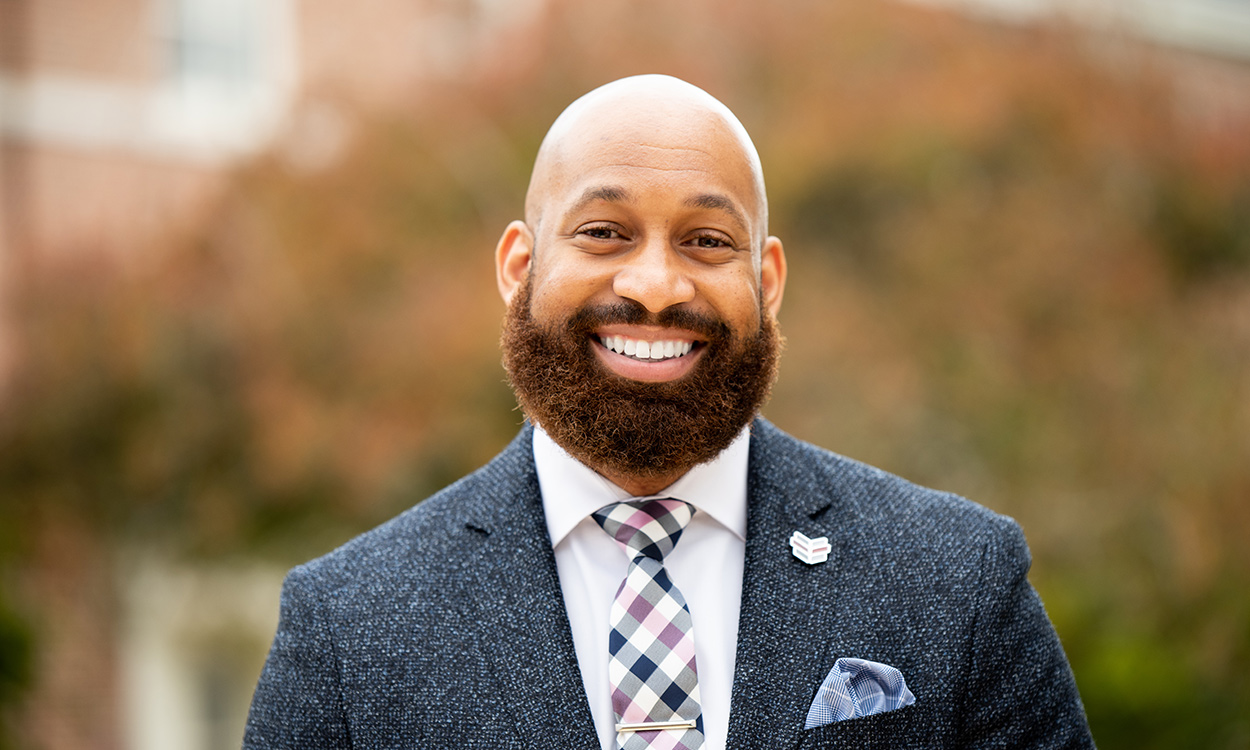












Nursing Students Grow Together Through Gardening
School of Nursing garden brings students together with the source of nutrition
Compost, gut. Gut, compost. To help her School of Nursing students understand the link between health and nutrition, Western Carolina University assistant professor Beth Nease takes them to the source – the nursing school’s organic garden plot where rich, black matter is the star.

“I really wanted to teach the nutrition lecture here because this is where nutrition starts,” said Nease, standing at the site she helped develop last year with a group of senior nursing students who wanted to support the community during the COVID-19 pandemic.


Nease teaches Foundations to Nursing Practice to beginning nursing students and has used the garden spot as the site for three lectures to meet the nutrition objectives for the course. She brings a flip chart with an outline of that day’s lesson, using the garden and its large bins of compost in various stages of decomposition to bring the lessons to life.

“I talk about microbes in your gut and how it’s the same for the soil. And unfortunately, with fertilizer and pesticides, we’re doing the same thing to the soil that we’re doing to our gut with antibiotics and poor diet,” Nease said. “We have a couch potato diet for the soil, which is 10-10-10 fertilizer and latent soil devoid of microbes. It equals the standard American diet, plus a vitamin. And neither one of them is really meeting our health care needs.


“What we should be doing is eating the inner garden diet and providing this for our
crops as well, using compost instead of fertilizer, because compost has microbes in
it and that provides the micro, as well as macro nutrients the plants need. And for us, same thing. We need to be eating more fiber and complex
carbohydrates and not so much simple carbohydrates and animal protein.”
The impressive show-and-tell has had an impact on Nease’s students. While not required,
working in the garden is an option for students, and many are. On this day, five of
Nease’s first semester nursing school students were at the garden weeding and planting
red cabbage, red lettuce, radishes and strawberries. “Red produce is filled with nutrition,”
Nease explained.

Chandler Woody of Burke County said the optional opportunity to work in the garden was simply an extension of the classroom, but with some additional hands-on learning. “For me, I learned that peas are a great source of protein. That’s definitely something to consider if you’re vegetarian.”


Grace Law of Concord loves the garden and what she has learned from it. “We learned about how we can apply some healthy eating habits and different foods that we grow here to our patient care,” she said. “I definitely have shifted to growing my own foods even in an apartment as a college student. I’ve been able to take the knowledge I’ve learned here and grow it on a smaller level for my own good.”


And for Anna Williams of Kernersville, the garden has made her see food in a different
way. “It’s really been helpful, especially learning about nutrition and being really
hands on and seeing what we’re putting into our body.”
The idea for the plot, which is part of the Cullowhee Community Garden, was started
last summer by WCU nursing student, Delanghey Burke, as a way to help with the area’s
food insecurity issue that arose during the pandemic, Nease said. Half the food grown
is donated to the Sylva Community Table and students who work the garden take the rest. There are six to 10 students involved
at any given time.

As visual as the garden itself is, Nease brings it to life in other ways to help teach the importance of proper nutrition. “I talk about how we need to eat the rainbow, a lot of colorful vegetables. What’s happening is we’re dumbing down our food. And everything is becoming white and when it’s white, it’s loaded with sugar. Corn is 10 times sweeter than it used to be. Onions are about six times sweeter than they used to be and they have less nutrients. We really need to go back to heirloom vegetables, so growing your own is a great way to do that. It’s also great way to know what pesticides are on the food, or go completely pesticide free with organic gardening like we are doing at the Cullowhee Community Garden. Growing your own food is the best way to know what we’re putting in our body.”
About the School of Nursing
Program Overview
Location: Residential, Hybrid, Online
Undergraduate - BSN, ABSN, RBIN, RN-BSN
Graduate - MSN, FNP, DNP, DNPA, MSN
100% BSN NCLEX Pass Rate
100% CRNA Board Pass Rate

